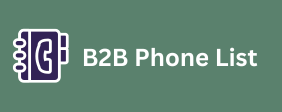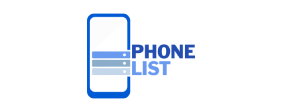Measuring Success: How Do We Measure ROI from WhatsApp Campaigns?
In today’s hyper-connected world, businesses are constantly seeking innovative channels to engage with their audience and drive conversions. WhatsApp, with its staggering global user base and high engagement rates, has emerged as a powerful tool for marketing and customer communication. However, simply launching campaigns isn’t enough; to truly leverage its potential, businesses must accurately measure the Return on Investment (ROI) from their WhatsApp efforts. This involves a comprehensive approach, combining key performance indicators (KPIs) with a clear understanding of campaign costs and revenue generation.
At its core, ROI answers a fundamental question: for every dollar spent on a WhatsApp campaign, how much revenue did it generate? The basic formula for ROI is:
ROI(
While the formula seems straightforward, applying it to WhatsApp campaigns requires careful consideration of various metrics and a robust tracking system.
Defining Campaign Goals and Attributing Value
Before diving into metrics, it’s crucial to establish clear, measurable goals for your WhatsApp campaigns. Are you aiming to:
Increase sales?
Generate leads?
Improve customer service and satisfaction?
Boost website traffic?
Enhance brand awareness and engagement?
Each goal will dictate the specific KPIs you need to track and how you attribute monetary value to them. For direct sales, the revenue generated is clear. For lead generation, you might assign a monetary value to each qualified lead based on your typical conversion rates. For customer service, consider the reduction in support costs or the increase in customer lifetime value (CLTV) due to improved satisfaction.
Key Performance Indicators (KPIs) for WhatsApp Campaigns
Several KPIs offer insights into the effectiveness of your WhatsApp campaigns. These can be broadly categorized:
1. Delivery & Engagement Metrics:
Delivery Rate: This foundational metric indicates the percentage of messages successfully delivered to recipients. A low delivery rate could signal issues with your contact list or message quality.
Open Rate: WhatsApp boasts exceptionally high open rates, often surpassing 80-90%. This metric shows how many recipients opened your message, reflecting the effectiveness of your subject lines and initial message appeal.
Response Rate: This measures the percentage of users who reply to your messages. A high response rate signifies strong engagement and that your content is resonating with your audience.
Click-Through Rate (CTR): If your campaign includes links (e.g., to a product page, landing page, or survey), CTR measures the percentage of recipients who clicked on them. A high CTR indicates compelling calls-to-action (CTAs) and relevant content.
2. Conversion & Revenue Metrics:
Conversion Rate: This is the ultimate metric for many campaigns, measuring the percentage of recipients who completed a desired action (e.g., made a purchase, signed up for a newsletter, downloaded an ebook). This directly ties back to your revenue generation.
Revenue Generated: This tracks the total monetary value of sales or other income directly attributable to your WhatsApp campaign. This requires robust tracking, often through UTM parameters for links leading to your website.
Cost Per Conversion (CPC): This calculates the cost incurred for each successful conversion. It’s obtained by dividing the total campaign cost by the number of conversions. A lower CPC indicates better campaign efficiency.
Average Order Value (AOV): For e-commerce campaigns, AOV from WhatsApp-driven sales can provide insights into the quality of conversions and customer spending habits.
Return on Campaign Spend (ROCS): This metric directly compares the revenue generated from a specific campaign to its cost. It provides a quick snapshot of profitability.
3. Customer-Centric Metrics:
Opt-Out Rate: A high opt-out rate indicates that your messages might be irrelevant, too frequent, or not providing enough value, leading to unsubscribes.
Customer Retention Rate: For customer service or loyalty campaigns, tracking how well you retain customers who interacted through WhatsApp provides insights into the long-term value of the channel.
Customer Lifetime Value (CLTV): While harder to attribute directly to a single campaign, understanding the CLTV of customers acquired or nurtured through WhatsApp can demonstrate the channel’s long-term impact on your business.
Customer Satisfaction (CSAT): Surveys or feedback mechanisms within WhatsApp can gauge customer satisfaction with your interactions, which indirectly impacts repeat business and advocacy.
Calculating Campaign Costs:
To accurately calculate ROI, you need to account for all costs associated with your WhatsApp campaigns. These typically include:
WhatsApp Business API Costs: WhatsApp charges businesses on a conversation-based model, with costs varying by country and whether the conversation is business-initiated or user-initiated.
Platform/Software Costs: This includes subscriptions for WhatsApp Business API providers, CRM integrations, chatbot platforms, and analytics tools.
Personnel Costs: The time and effort spent by your team on campaign planning, content creation, message management, and customer support.
Content Creation Costs: Any expenses related to designing rich media (images, videos), writing compelling copy, or developing interactive elements.
Advertising Spend (for Click-to-WhatsApp Ads): If you’re running ads that direct users to WhatsApp conversations, include the ad spend.
Implementing Tracking and Analytics:
Effective ROI measurement hinges on robust tracking and analytics.
UTM Parameters: Use Urchin Tracking Module (UTM) codes in all links shared via WhatsApp. These allow you to track traffic and conversions originating specifically from your WhatsApp campaigns in tools like Google Analytics.
WhatsApp Business API Analytics: Leverage the analytics provided by your WhatsApp Business API provider or platform. These often offer insights into message delivery, opens, and basic interactions.
CRM Integration: Integrate WhatsApp with your Customer Relationship Management (CRM) system to track customer journeys, attribute sales to WhatsApp interactions, and gain a holistic view of customer data.
Conversion Tracking: Implement conversion pixels or event tracking on your website or app to monitor specific actions taken by users after interacting with your WhatsApp messages.
A/B Testing: Continuously A/B test different message formats, CTAs, timings, and content to identify what resonates best with your audience and drives higher ROI.
Optimizing for Higher ROI:
Measuring ROI is not just about reporting; it’s about optimizing. Analyze your data to identify trends, strengths, and weaknesses. If a campaign shows a low conversion rate, investigate the CTR or response rate. If the opt-out rate is high, re-evaluate your messaging strategy. By continuously refining your campaigns based on data-driven insights, you can improve your WhatsApp marketing effectiveness and maximize your return on investment over time.

